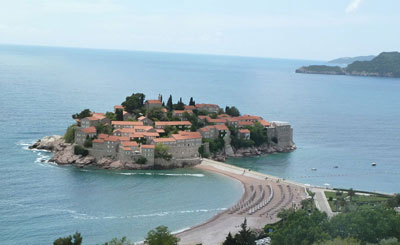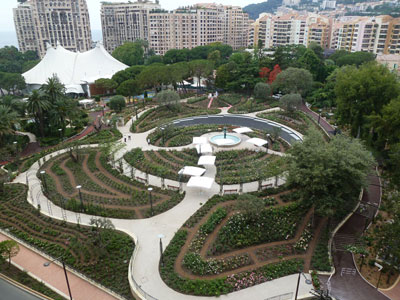Recommendations for a European rental car journey
This article appears on page 43 of the February 2015 issue.
My wife, Susie, and I travel quite a bit throughout the world, mostly for gardening conventions, events and shows. Because many of our destinations are not in major cities, we travel almost exclusively by rental car.
In the last year we were in Belgium and Germany for three weeks, China for two, Australia and New Zealand for seven and Western and Eastern Europe for another seven weeks. We love to drive through small country towns, something cruise-takers and those who fly from city to city cannot do.
I would mention trains, but the last three times we were in France, someone from the railways was on strike, so we try to avoid them.
Selecting a vehicle
We typically rent our cars through Europcar (877/940-6900, www.europcar.com) or one of the companies I have frequent-driver points with, like Enterprise. You are usually required to pay ahead for the rental.
When renting a car, there are a few things to consider. First, choose a car to fit your suitcases. Because Susie and I attend many semiformal events, we have to take a lot of dressy clothes and, therefore, need larger suitcases. Many European cars have space for only a small carry-on or two, no more, and we want to make sure our luggage is hidden in the trunk or under a cover while traveling between hotels.
On the other hand, roads are often small and narrow, so a huge car is not recommended.
We get basic insurance, which usually has a €1,000-€1,500 deductible. Otherwise, should an accident occur, you’d have to pay the full bill before you leave and deal with your insurance or credit card company after the fact.
Make sure you pay for the car with a credit card, as most will have their own insurance and loss/damage coverage as part of their service. Some countries outside the European Union will not allow you to enter without basic insurance.
Before leaving home, make a list of all of the confirmation numbers for your rental car, flights and hotels (with PINs, if applicable) and keep copies in your luggage in case you lose your wallet, cell phone or laptop.
On the road
Most European countries have toll roads. We prefer to stay off the toll roads when we can and drive through small towns instead, programming our GPS for “no tolls.”
We collect a lot of euro coins and small bills (€20 and less) to pay the tolls we can’t avoid. Driving from Paris to Lyon, for example, will cost about €33 ($41) in tolls. Most US credit cards will not work for toll payments; they need to have chip-and-pin technology, so my card that was good two years ago is no longer valid.
Also, be sure to get in the correct lane for the form of payment chosen. Nothing is more embarrassing than being stuck in the wrong lane with cars honking behind you! Occasionally there will be a manned booth, marked by a sign depicting a person with an arm sticking out of a booth. Head there, just in case.
At most toll stops you get a ticket first, then pay when you exit the tollway or where the toll area ends.
When choosing a toll lane, look for the green “T” sign or one with bills and coins pictured on it. Those will accept cash. The signs with two cards pictured denote lanes where only credit cards and prepaid toll cards are accepted. Avoid those as well as lanes marked with a lowercase “t” in France, which have automated toll counters for cars equipped with electronic receivers.
On the tollways there are signs that tempt you to visit the small villages and landmarks such as cathedrals and castles in the area. The only problem is you can’t get there. Offramps on toll roads are few and far between, often with 20 miles between them. So, unless we need to get to a place quickly, we set the GPS to “no toll roads” and enjoy driving through the countryside in places like Bordeaux and Cahors.
Speaking of GPS, make sure you have a good one with up-to-date maps. These systems are invaluable, especially those that show speed limits, your driving speed and the locations of cameras designed to catch speeders.
Occasionally, GPS is of no use. In Monaco, there were many tunnels, high cliffs and tall buildings that prevented the system from working. In Fontvieille, we stayed at a hotel that wasn’t in the GPS. Luckily, a police officer told us how to find the “secret” tunnel to get there.
If you plan to drive in Switzerland, a vignette (sticker), costing €35 ($43), is required to drive on the national highways. Most border crossing points will not allow you to enter the country without one, especially if you’re crossing from Italy or near Geneva. Ask the rental company if your car will have the sticker. They are good for one year.
The Swiss are quite diligent about enforcing the vignette, so make sure you have one. They can be purchased at the border crossing.
Eastern Europe
Renting a vehicle for a multicountry trip can be tricky. Most rental companies will not allow you to drive their cars out of the country in which you rent them. Those that do will charge a fee per border crossing. A rental car from, say, Italy probably will be cost prohibitive to drive into Eastern Europe, that is, if the company will even let you.
With a rental car from Croatia, crossing into Slovenia was free, but driving into other countries resulted in a charge of €50 for each.
Make sure the rental company knows what countries you will be traveling in so you can be sure you’ll be covered. With your documents, you will be given a card with a list of approved countries, and it will be asked for when you cross the border in most of the Eastern European countries.
If you decide to enter a country not on the approved list, you will most likely be refused entry or you will have to buy insurance before crossing the border, if there is an insurance company nearby. Insurance to enter Kosovo, for example, cost €30, and it was valid for 15 days.
In Kosovo and Albania we saw numerous speed traps. Most were on the main road. Police use radar to track your speed and flags to pull offenders over to the side of the road, where a fine must be paid on demand. In Kosovo I saw about nine traps over the short distance we drove there. In Albania it was closer to 20, so make sure you mind the speed limit. As there are few speed limit signs, a good GPS is critical there to avoid a speeding ticket.
I might add that in these two countries as well as in Macedonia, local drivers seemed fearless, passing at will, even in town or on blind curves. We saw many close calls, head-ons being missed by inches. The large number of memorials on the sides of the roads told us that not all are successful.
As a driver, I had to be constantly on the defense. More than once I came out of curve only to see a car in my lane coming head on and had to slam on my brakes.
If you go to Kosovo first, be prepared to not be allowed into Serbia. As Serbia still does not recognize Kosovo’s independence, the tension between the countries remains strong.
When traveling between countries in Eastern Europe, the different currencies may cause problems. Croatian vendors might accept euros if they have change; otherwise, you’ll need kunas. We went to one store in Dubrovnik and they accepted euros; the next two stores we visited did not.
In Serbia, euros were generally not accepted unless left as a tip or if there was no other option.
Businesses in Macedonia took euros but gave us change in the local currency.
If you want to drive the route along the Dalmatian Coast, be prepared to not be in a hurry. The roads were narrow and curvy, and the average speed was about 40 kilometers per hour (25 mph). It took us seven hours to drive the 440 kilometers from Durres, Albania, to Dubrovnik, Croatia. However, we drove past some beautiful countryside, sea towns and historical monuments, so it was well worth the drive.





